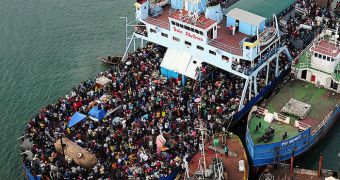Statisticians show that the current year, 2010, is already well outside the limits of what some would call a “normal” number of casualties produced by natural disasters. Many people have already died due to catastrophe, and Mother Nature unleashed a series of devastating events on us, ranging from earthquakes to incredible snowfalls. And we are still just three months into the year, experts say. The risk of other weather or tectonic events striking is very high, but hopes are high that not many people will get killed, LiveScience reports.
As per usual, the largest contribution to the yearly death toll from natural causes belongs to a single event. For 2010, that is the January 12 Haiti earthquake, which struck the impoverished nation with full force, and caught everyone off-guard. It made more than 200,000 victims, injured many more, and left more than 1 million people without a home, prone to disease, and at the mercy of foreign rescue efforts. The tremor was followed by another aftershock, on January 20, but which did not cause so much destruction. However, the second tremor did bring down a large number of houses that the first one had just shaken loose. The Inter-American Development Bank says that the damage from this disaster will only be offset with 8 to 14 billion dollars.
The scale of the devastation that we experienced in just three months becomes clearer when relating it to long-term average. Between 2000 and 2009, the yearly average death rate from natural disasters was 78,000 people. There were two large contributors to this elevated mean, the 2004 Indian Ocean earthquake – that sent a killer tsunami over Sri Lanka, killing 230,000 – and the 2008 Wenchuan tremor that struck China, killing around 70,000 people. In the 1990s, the average was even smaller, at around 43,000 individuals per year. The mean was also high in the 1980s, when the United Nations International Strategy for Disaster Reduction (ISDR) reports that 75,000 people lost their lives annually.
“Often it's not the size of the event itself in terms of magnitude […] it's the vulnerability of what's on top of the Earth when those earthquakes occur. The Haiti earthquake is a true catastrophe of a type that we really haven't seen historically, in terms of recorded history, in terms of its impact on a single society,” says University of Colorado in Boulder (UCB) Natural Hazards Center director and sociology professor, Kathleen Tierney.

 14 DAY TRIAL //
14 DAY TRIAL //